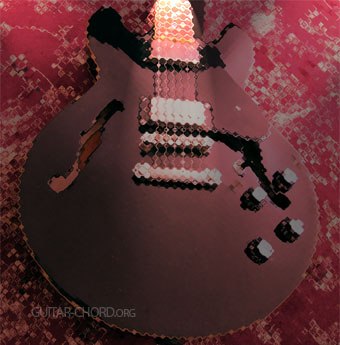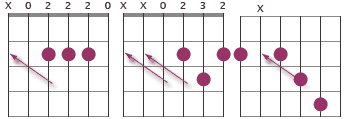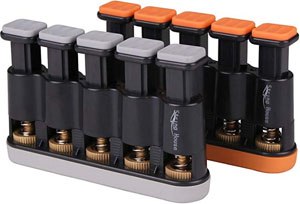Learn all about how to play guitar chords
 In this guide you will learn how to play guitar chords, which is one of the first things a beginner normally looks into.
In this guide you will learn how to play guitar chords, which is one of the first things a beginner normally looks into.
Playing a chord on the guitar is essentially playing on one or many strings with one hand at the same time you have some fingers fretted (pressed down) with the other hand. You need to first position your left-hand fingers according to a certain chord shape (more about actual shapes later) and when playing with your right hand. There are two main options: you can strum – playing over many strings – or you can pick – playing one string at a time.
What you need to know about playing guitar chords is partly covered in other articles at this site. First of all, you must know how to read chord charts. After you know how to understand chord charts you should learn the fingerings of some easy chords.
Mute strings in chords
In chords like A and C major, you play only on five of the strings (in diagrams, the sixth string is indicated with an “x”), in both cases the low E-string is left out. The problem with these kinds of chords is that it can be hard to strum the right strings with precision. It will often happen that you also play the low E-string in a A major chord. This means the root of the chord is no longer being A but becomes E instead.
To be able to focus more on rhythm than precision, you should learn the typical method guitarist’s use. The method is to mute the low string either by touching it with the thumb or with a finger positioned on an adjacent string.
The important thing is that you only mute the string by lightly touching it and not pressing it down. You should not hear a tone from it, just a low muted sound that drowns in the sound from the other strings.
In situations when there are two strings that are excluded, as in D major, the best way is probably to mute both strings with your thumb. It can, however, be hard to reach over and touch both strings with your thumb (in that case it's not a disaster if you strum over the second lowest strings because the open string A note belong to the D major.

Arrows showing strings that are muted/not played
Muted strings inside chords
There are also chords that involve strings in the middle that should not be played, which can be seen in the third diagram to the right above. In these cases, you touch the string with some part of the finger nearby to mute it. You should not strum these chords in two sequences. In the context of fingerpicking, there is no problem at all of obvious reasons.
Techniques and strength
In the beginning you are only able to position your fingers slowly. This is natural since your fingers haven’t been used to the movements and besides that lacks strength. Some tips in this area can be found in the article about finger placements and how to avoid muting adjacent strings.
When you succeed in playing one chord with clean sound, the next step is to begin moving from chord to chord. This will be slow at first. It's important that you do this in the most efficient way, see tips on how to practice on chords.
You could increase strength faster by special made devices as in the picture below.

Chord progressions
When you are able to move from one chord to another without much difficulty, the next step is learning chord progressions. A progression is a collection of chords that sound great when played in a subsequent order. The basics are to choose chords that belong to certain key and mix right categories of chords together. See examples of progressions.
Voicings
Music is full of opportunities and besides playing the most standard versions you could also find alternative versions and these are sometimes referred to as voicings.
Let's take a common C major chord as an example:

This is a C chord in its typical open chord shape. But there are many ways to enrich the sound and find new expressions by trying other versions of the same chord:

It's the same notes involved but the result doesn’t sound exactly the same because of the different tone order and in some cases different pitches. Nobody will force you to play alternative chord versions, but are you interested in further exploring your instrument, voicings can lead to an interesting journey.
Go to the main section of voicings for more in-depth reading and more charts.
See all articles about guitar.